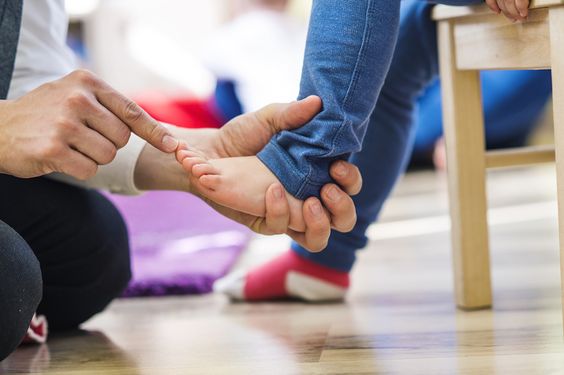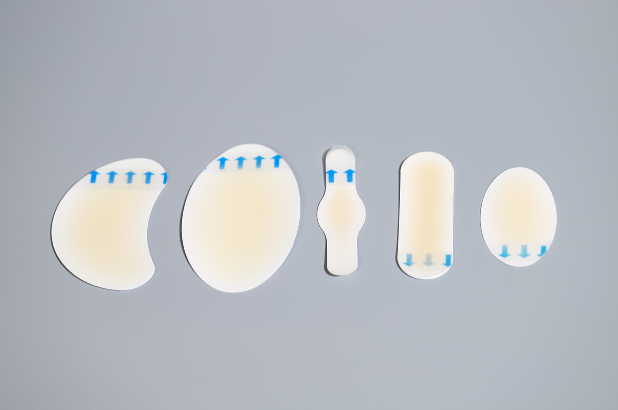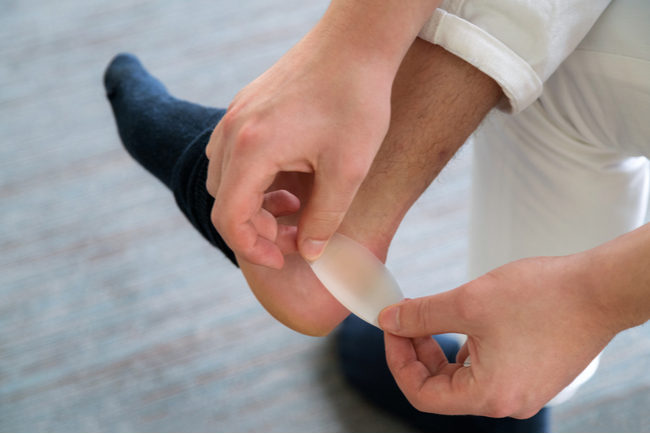who loves the outdoors and works out a lot should have been bothered by blisters. Foot blisters can make exercising very uncomfortable. If you enjoy cycling, running or even hiking, you know that blisters can really stop you from moving. This article will let you know how to prevent blisters in advance. If blisters have already appeared, don't worry, just follow my tips below.
How do blisters develop?
Blisters typically develop from skin rubbing against shoes or socks. Skin contact points are where the continuous friction, pressure, and shear forces are too great to maintain skin integrity, causing serum to leak from adjacent tissues. Serum build-up is the body's natural response to injured skin; it's designed to fill and cushion the skin beneath it. Generally, it occurs after a long period of strenuous exercise. A blister filled with transparent watery liquid is formed under the skin, and sometimes blood blisters are also formed.
①Wear ill-fitting shoes
②Long time running and walking
③Abnormal foot shape
④ Swelling due to heat and moisture
How to prevent blisters?
To prevent blisters, reduce shear, friction, and pressure on your feet while exercising. Blisters are easy to prevent if you know what to do.
①Wear shoes that fit your feet: Because each person's feet are different, how to choose is also very important. A pair of shoes that fit the feet should not slip at the heel, and the toes should not rub against the front toes of the feet. New shoes, don't start strenuous exercise, run and walk slowly. Don't tie the shoelaces too loosely, otherwise, the feet will slip into the shoes.
②Choose the right socks: socks should fit well, and not be too thick, which can prevent friction from causing blisters, and the material of the socks is also very important. Synthetic and moisture-wicking socks allow moisture to move with the fabric instead of being absorbed To promote evaporation, it not only keeps feet dry but also prevent chapped skin compared to traditional cotton socks.
③Use blister plaster: Put it on the parts that are prone to blisters, which can better prevent blisters. Some foot abnormalities include bunions, hammer toes, heel, and bone spurs, please use blister plaster to remove blisters. Protect the skin of the feet, because it is made of hydrocolloid dressing, soft, wear-resistant, and sticky, sticking to the skin can reduce friction and prevent the formation of blisters.
④Maintain the skin of your feet:
Usually, you can maintain the habit of exfoliating once a week and apply Vaseline on your feet, so as to protect the skin and reduce friction.
What should I do if I have already thought of blisters?
Stop and don't move: When you develop blisters, be sure to stop any activities you are participating in and decide how to treat them. Working through the pain can cause the blister to burst and even become infected. If your socks are sweaty or wet, change them to dry ones, and if your shoes make you uncomfortable, change your shoes.
Does the blister needs to be punctured?
The best solution to treating a blister is to keep it intact. Poking can increase the risk of infection. Most blisters will heal on their own if you give them a few days. If you have a large blister that interferes with your walking, it's best to pop it. If the blister is larger than 5 mm in diameter, follow these steps to pop the blister safely:
① Check for signs of infection (green or yellow pus and swelling). If the blister becomes infected, contact your doctor promptly.
②Wash your hands, then clean the blisters with soap and water or rubbing alcohol,
③Find the edge of the blister and poke it in several places with a needle. Absorb exudate with clean gauze.
④ Put blister plaster on the blister, which is made of hydrocolloid dressing. Hydrocolloids can speed up the healing of the wound, provide the wound with a slightly acidic airtight space that is conducive to healing, prevent the invasion of foreign microorganisms and reduce infection probability.
For more information on Innomed® blister plaster, refer to the previous articles. If you have customized needs, you are welcome to contact us; we will serve you wholeheartedly.
At Longterm Medical, we transform this data by innovating and developing products that make life easier for those who need loving care.
Editor: kiki Jia
Date: December 12, 2022

 English
English عربى
عربى Español
Español русский
русский 中文简体
中文简体








